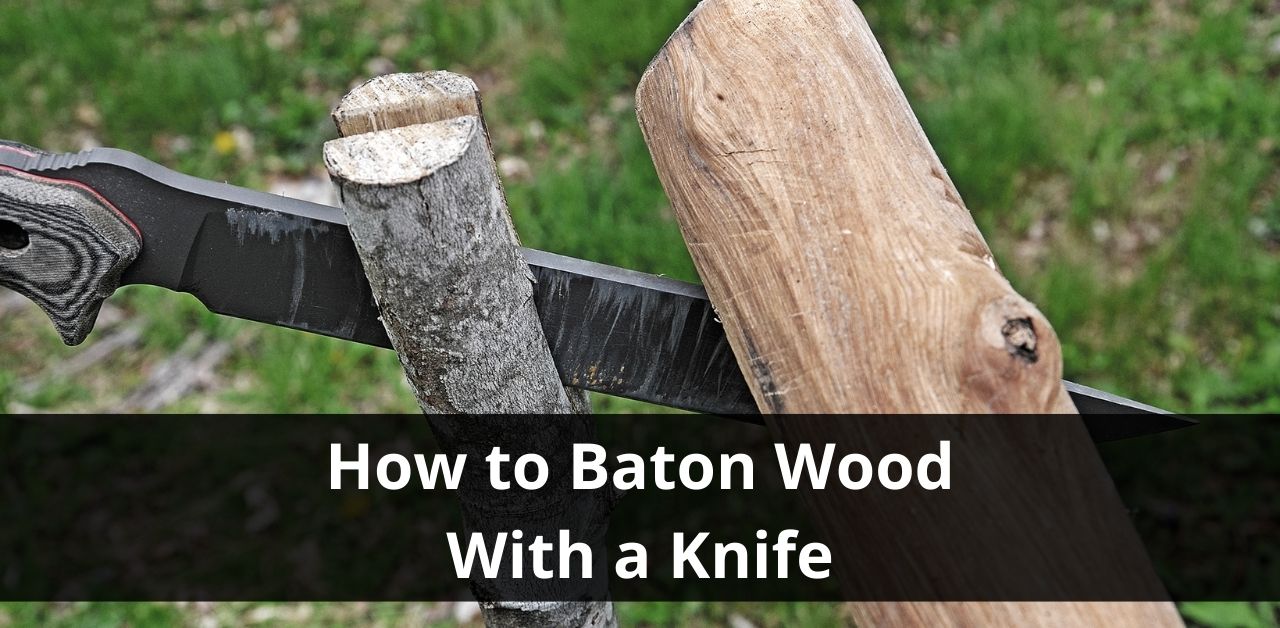Purpose of Baton
The process of acquiring knowledge crucial to your survival will never be a waste of time, regardless of whether you are faced with an emergency situation or just on your latest outdoor adventure.
Batoning is an excellent technique to learn if you are an avid outdoorsman. The majority of people make the mistake of assuming they can simply cross the bridge when they reach it.
The importance of knowing these techniques and understanding how to apply them correctly should not be overlooked. In this manner, you will be able to save time and energy that you may need to use during subsequent tasks.
When it comes to learning new outdoor skills, trial and error is not always the best approach, especially when your life, or the life of someone else, depends on your understanding of it. This is certainly the case with batoning.
What is Batoning?
As a simple definition, batoning is the act of splitting wood with a strong and very sharp knife with the aid of a hard and heavy object that resembles a baton. Using a hammer, this motion is similar to driving a nail.
The purpose of this is usually to create kindling (material necessary for starting a fire), to produce boards, or to separate wet and dry layers within the wood.
What is the Advantage of Using This Technique?
In comparison to chopping wood, splitting it is an easier and more practical alternative.
The batoning technique has a number of additional benefits, including the fact that it requires less effort than chopping and can achieve the same result faster.
Moreover, when the wood is batoned rather than chopped, it can be sliced proportionally, thereby achieving superior results.
- Batoning can be used by people without any chopping experience – chopping requires the user to aim before driving the chopper into wood. It is a difficult skill to master for a novice outdoorsman. There is a contradiction between it and batoning. In most cases, people do not have the brute strength needed to split wood with an everyday carry blade, so they use a batoning method to accomplish the task.
- With an axe, you won’t usually find yourself in a survival situation. Survival techniques such as batoning are far more practical if you know how to do them. Having your EDC or survival knife on hand will increase your chances of being found in an emergency situation.
What Are the Disadvantage of This Technique?
There are also some weaknesses to this technique, including:
- The process of batoning wet logs is more difficult, requiring more energy than chopping.
- Splitting larger pieces of wood can be more challenging with a smaller blade.
- If you handle the knife improperly, you may break or damage it.
Don’t Risk Breaking Your Knife While Batoning.
When you are faced with an emergency situation, the last thing you want to do is damage your most valuable survival tool. If you strike the knife at an angle rather than straight down, you are more likely to break or damage the blade. It can also be caused by using the wrong type of object as a baton.
The blade of the knife can be chipped away or cracked if you strike it with a rock or other object. It is possible to cause permanent damage to the blade if you use anything stronger than it. The knife will remain intact if you baton wood and make contact with it straight down.
Knives with full tangs or through-tangs are the best choices due to their durability. It won’t always be possible to choose the type of blade to use, but if the opportunity arises, select a blade without plastic embedded partially in the tang. The manufacturing will be put to the test.
So How Do You Baton Wood?
Following are a few simple steps that will get you started on your path to acquiring this essential survival skill. Before you use this technique on your next trip, be sure to practice it in a controlled environment. To prevent damage to a more expensive blade, you will also want to use one of your less expensive or older knives when practicing.
- Using a solid patch of dirt or an object that can withstand the force you will be putting on the wood, place the wood you will be batoning into a groove.
- With the sharp edge facing down, place the knife in the middle of the wood that will be split. Start with your knife at a split or crack in the wood if you want the process to be easier. To prevent the knife’s blade from being damaged, ensure the spine of the knife is straight up.
- Strike the center of your knife with the second piece of wood you will use as your baton.
- The baton should be placed directly on the spine of the blade. Avoid batoning near the knife’s tip at all times. If you want to reduce the possibility of breaking the blade, strike the area near the center.
- Be sure to adjust the knife every now and then to ensure you’re striking the strongest part of the blade and that the split is proportionate.
- You should avoid hitting the handle of the knife as much as possible. The center of the knife blade is weaker than the tip. If, however, it is straying from its intended alignment, you can strike it lightly.
There are a number of techniques that can be used to create shelter, build a fire, or simply split some wood, including batoning. This technique can not only save your life but can also prevent your knife from sustaining permanent damage if you practice and perfect it.
